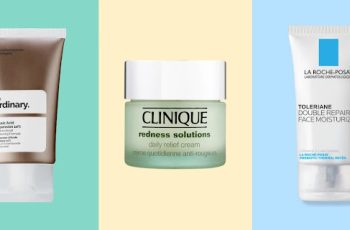
Does Spot Treatment Work?
There is always that one particular spot that just won’t go. This is why we are truly thankful for spot treatments! With a selection of choices to decide from you will find a product that will certainly fit into your routine and work for your skin, zapping away all those pesky blemishes, but do they live up to all the skin claims, let’s find out more!
How long does spot treatment take to work?
The key to making spot treatments work is consistency. If there is a certain blemish that has no intention of going away any time soon applying the spot treatment topically when needed will give it some marching orders. You will find that it’ll roughly 4 weeks for the spot treatment to work at reducing the size and calming the redness of any breakouts.
There are many different types of spot treatments available. Some formulas leave behind a visible patch with the drying and bacteria fighting ingredients busily work underneath. These are the products that can be used overnight without the worry of making an enormous mess of your pillowcases unlike other products, such as toothpaste or nappy cream, both of which should not go anywhere near your face or breakouts.
You will also find there are other spot treatments that dry clear leaving you with the ability to apply makeup on top and go about your day without the worry of any funny looks. This type of formula works just as well and contains an array of potent, active ingredients that can help reduce redness and swelling significantly.
Is spot treatment necessary?
This is entirely up to your own personal preference. If you are finding some blemishes outstay their welcome and always seem to remain under the skin then you can use spot treatment to draw up the bacteria, dirt and excess sebum that is laying underneath. This will sometimes make the spot have a head and from there you can decide the next steps, be it an extraction performed by a beauty therapist or left in the hopes it will go away in its own time. The one point I must stress is to not squeeze or pick any spots yourself! It doesn’t matter if you use the most gentle touch or don’t squeeze too hard the skin breaking from the pressure will result in damage and sometimes lead to scarring and pigmentation.
We have a dedicated blog post for you about how to get rid of blemishes fast to help you with any other questions you may have and it is full of useful tips on treating and removing spots quickly without any lasting damage to the skin.
Do spot treatment make acne worse?
You can always have too much of a good thing. When using a spot treatment you must keep in mind that you will need to look after the skin around the blemishes as these topical products are known for being quite drying to the face.
The best method to choose when using strong spot treatments is to apply the product when needed on a particularly stubborn spot avoid applying the product on the entire face. This will stop the skin from becoming too dry, leaving the face feeling tight, irritated and can result in more breakouts. During the times you aren’t using the spot treatment salicylic acid is an ingredient that will work wonders in your routine! Salicylic acid is a BHA that works further down into the deeper layers of the skin and help to unclog pores of any build-up of bacteria, dirt and oil. By using a face wash or serum containing salicylic you have the ability to keep your skin clearer for a considerably longer amount of time. Just remember to keep the skin’s protective barrier hydrated and functioning correctly with a moisturiser that is full of hyaluronic acid and other skin nourishing ingredients.
When should I apply spot treatment?
When you need to, though this may sound very simple, (perhaps too simple when it comes to treating breakouts). But by using spot treatments on blemishes that need help clearing up quicker you are not only zapping those away, but keeping the skin balanced, healthy and happy. Here is a rundown of where the spot treatment should be applied throughout your daily routine:
Clean the skin using a cleanser or face wash
Apply a chemical exfoliating toner to slough away any remaining dead skin cells
If using a serum, apply this now allowing enough time for it to absorb into the skin
Apply spot treatment topically on any active blemishes that you’d want to treat
If using a face oil apply this now avoiding the spot treatment
Apply moisturiser
Apply eye cream
(AM only) Apply an SPF of 30 and above avoiding the spot treatment areas
If you are new to skincare or trying to introduce new steps in your regime this may seem like a lot, but as each product treats different areas or layers of the skin, with various ingredients and roles they perform you won’t overload the skin and should work well as a team to give your skin stunning clarity.
How can I get clear skin fast?
We have previously shared with you some helpful hints and methods in a blog post dedicated to getting rid of spots fast. There are also some easy steps to follow to give you clear skin:
Remove makeup every night with a cleanser that will work with your skin
Avoid touching your face throughout the day as this can transfer bacteria from your fingers to your face
Cut out refined sugar as much as you can from your diet
Avoid greasy and unhealthy fast food
Drink plenty of water daily
Change your pillowcases to avoid cross contamination
Wash your makeup brushes more than once a fortnight to keep them clear of bacteria and dirt that lead to spots
There you have it, we have hopefully answered your main questions about spot treatments and whether they work. You will find it to be a unique step in your routine, but once you have gotten into the habit of knowing how to use it you will wonder how you ever lived without it!


